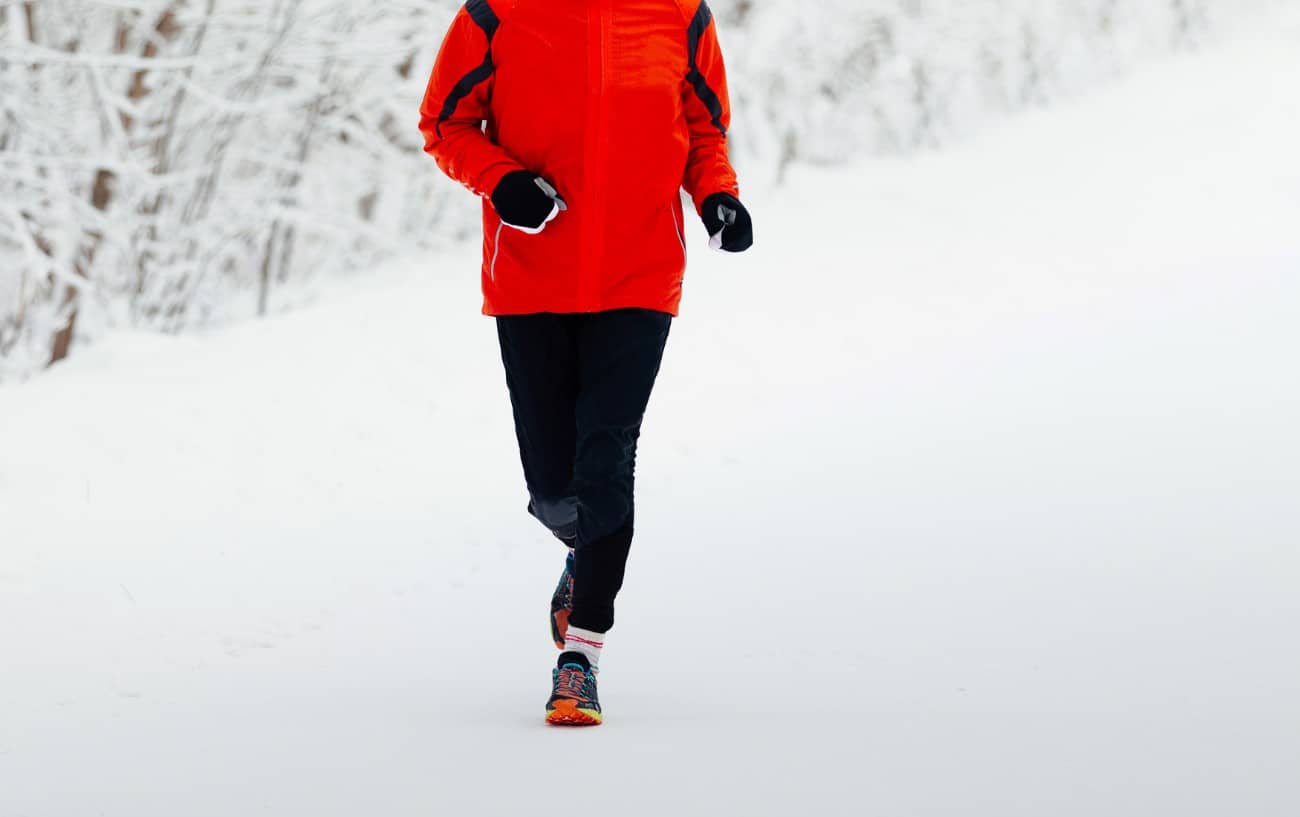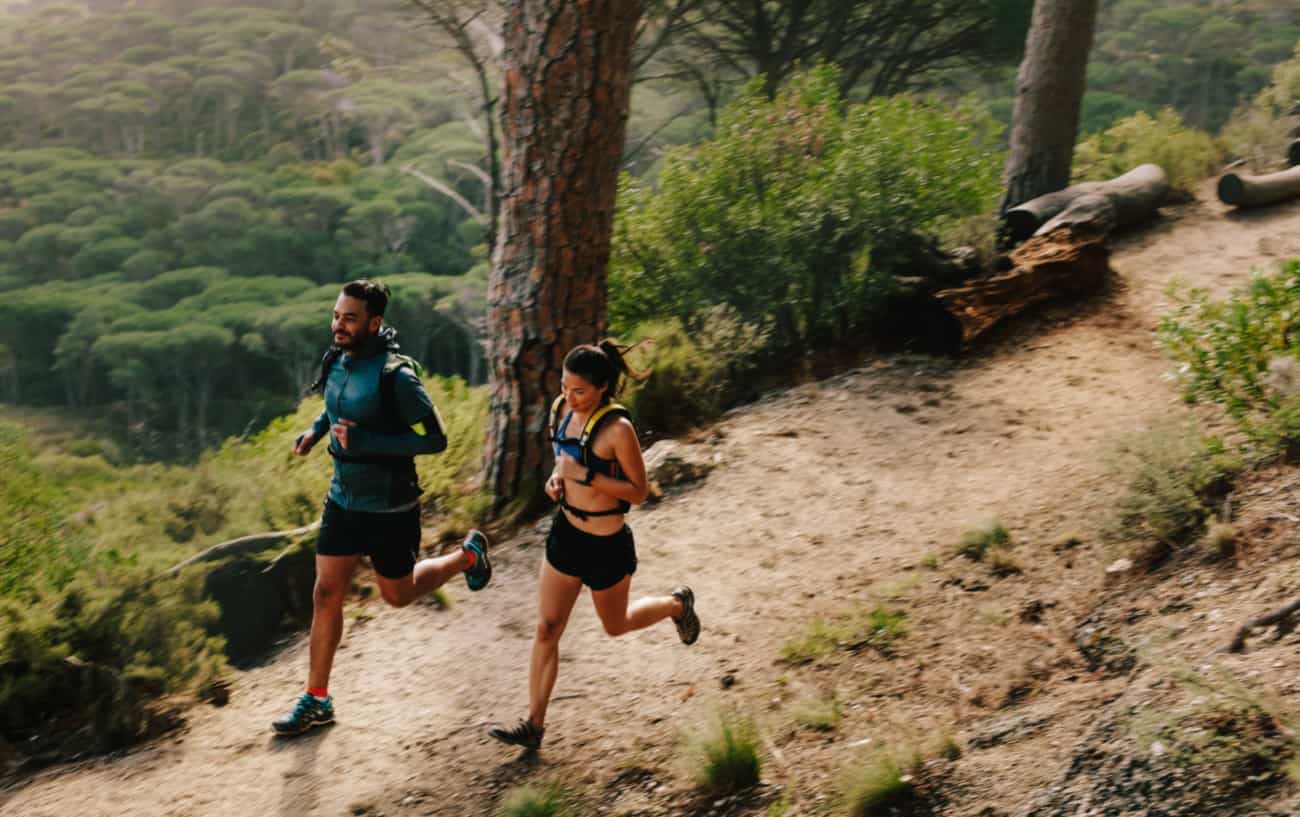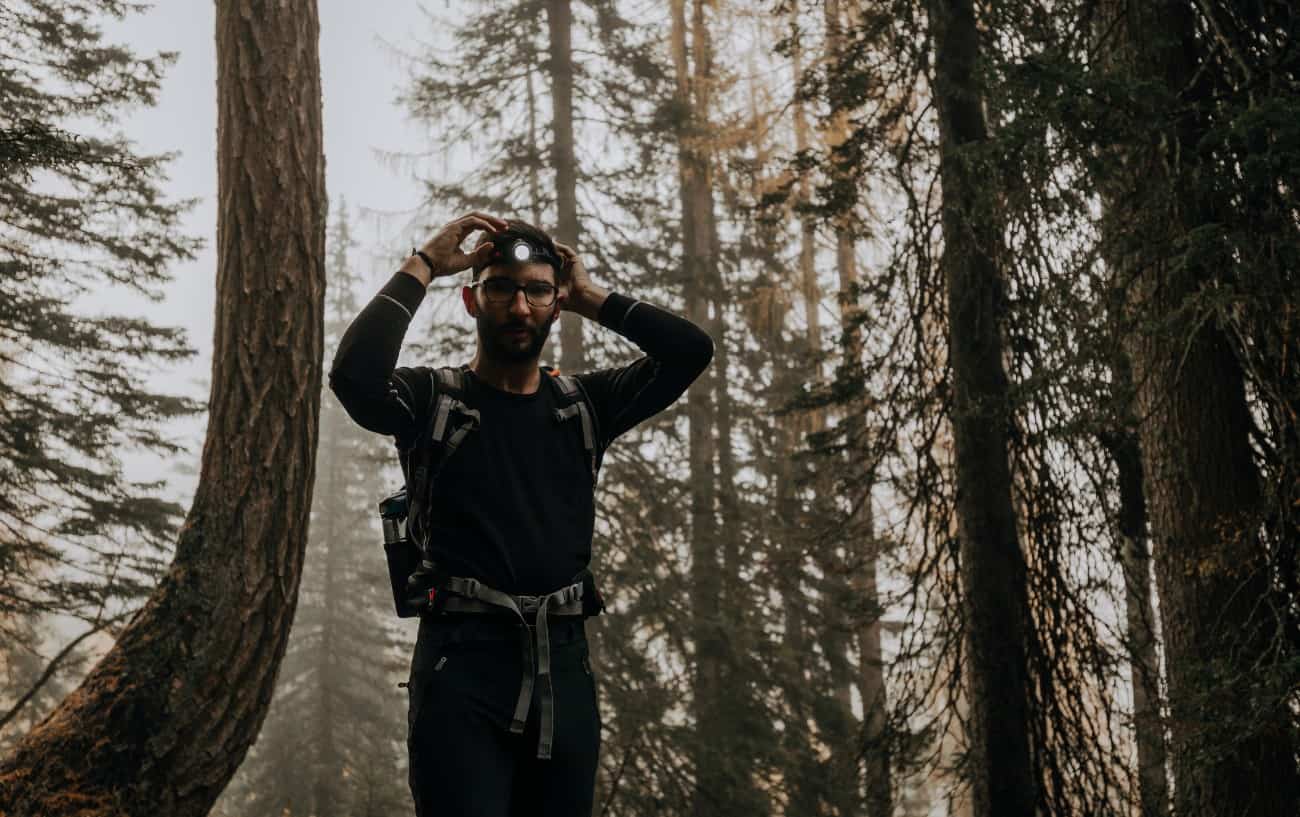Running has established itself as a cornerstone activity for millions worldwide who are seeking physical fitness and mental well-being.
Whether you’re pounding the pavement in a bustling city preparing for a road race or exploring tranquil trails with the goal of an ultra, the benefits of running are undeniable.
However, safety remains paramount amidst the exhilaration of the famous runner’s high and the satisfaction of achieving new objectives.
Understanding the essentials of runner safety can ensure that every run is as enjoyable as beneficial.
This guide explores key strategies and precautions and provides running safety tips to help runners of all levels stay safe and confident on the road or on trails.

#1: Prepare For Extreme Weather Conditions
You must be prepared for the weather you are venturing into, from scorching heat and humidity to frigid temperatures and wind chill.
For hot and humid weather, wear light, quick-dry running gear, bring plenty of water and electrolytes with you, and cool off periodically by dousing the back of your neck with cold water.
Consuming enough liquid and electrolytes and keeping your body temperature down will help prevent dehydration.
When planning your run in these conditions, calculate the estimated time you’ll spend out there and bring along more than you would usually need. It’s always better to be over-prepared than underprepared to avoid putting yourself at risk.
For bitter cold weather, ensure proper layering, paying attention to every detail.
Depending on the temperature, you may need to be covered from head to toe in wool socks, fleece-lined leggings or joggers, and face and ear coverings to avoid discomfort or potential harm to your skin.
Ice and snow can create treacherous conditions, making the road unsafe for a potential slip-and-fall or a car veering off the road.
Be smart about your choices. If the weather is too extreme either way, think about an alternative. Access to a treadmill at home or at a gym is handy in these situations as it could save you from facing a potential hazard.

#2: Take Precautions on The Road
Even though road running seems low-risk as the terrain is predictable and seemingly safe, details must be considered.
Depending on the time of day you need to train, there may be substantial traffic on the roads. To avoid accidents, run on the side of the road where you can see the cars coming towards you. Unlike on a bicycle, we want to run against the traffic to see what’s coming.
Just as we want to see the cars coming, we want cars to see us. Bright-colored, fluorescent clothing, such as neon green, yellow, pink, and orange, is a great way to be seen on the road.
Even so, always err on the side of caution. As you think you are visible, a driver’s slightest distraction may pose a threat to you on the road.
So, when possible, stay on the sidewalk or the shoulder, or better yet, choose neighborhoods with less traffic. Taking some extra time to drive to a nearby area to ensure your safety is well worth it.
#3: Take Precautions When Running In The Dark
Aside from traffic, another potential running hazard can become an issue due to difficulty scheduling workouts during daylight hours.
Due to our busy lives, we may need to run either in the early morning before the sun comes up or after it goes down. If this applies to you, precautions should be taken to avoid risk and to run safely in the dark.
Again, dress in bright, neon, and reflective clothing that is visible to drivers. These days, a lot of running gear, such as running shoes, armbands, and vests, is equipped with reflectors.
In addition, use safety gear like a headlamp or wearable flashlight to illuminate the road in front of you, alert cars of your presence, and ensure your footing is safe.
Choose naturally well-lit areas with street lights where you know it will be safe to run during these hours.

#4: Know Your Route
Most likely, your runs during the week will be on home territory, so you’ll be familiar with where you will run. However, longer runs are an excellent opportunity to venture out and discover something new, whether on the road or the trails.
The most important thing is to plan accordingly and be prepared for these adventures. Plan your route in advance with maps, Strava, Trailforks, or whichever app you usually use.
Suppose you are in an unknown area due to travel. In that case, you can use these apps to find the most commonly run routes using heatmaps or Strava segments. You can also search for a local running group to see if there are any activities for that particular weekend in the area.
If you are on the trails, do not stray from the path.
Dodgy footing or unknown terrain could lead you into trouble, such as getting lost in the woods or falling down a ravine. It seems extreme, but it does happen, so let’s do what we can to avoid it at all costs.
Try to choose marked trails, such as national or local parks. Get to know the markings you need to follow well so there are no surprises or moments of uncertainty during your run.
You should always run with your phone and a whistle in your pack in case of an emergency. Also, always let people who are not running with you know where you’ll be.

#5: Run Accompanied Or Use Live Tracking
Running with others is not as easy as it sounds. Factors such as varying scheduling, fitness levels, goals, and training plans may make it tough to find someone to train with, and many of us end up running alone.
However, if possible, it is ideal to have a running partner. This not only helps pass the time during a hard or long workout but adds to your safety.
You are always safer in masses, whether for power in numbers or having someone there to help in an emergency. It’s always important for your running buddies to be aware of any specific medical information they should know about you just in case.
If, for some reason, you get off course, two heads are always better than one, and having someone there may save you both some panic.
If you can’t find a running buddy, you can join a local running club. Look for groups particular to the type of running you do, whether marathons, a couch to 5K group, trail, or ultra running.
Finding others with the same goal may find you others to train with. Joining the running community is not only a way to ensure safety, but it makes training even more fun.
If you must run alone, an excellent option is using GPS devices such as Garmin and Strava Beacon with Live Tracking.
These apps allow you to create a list of emergency contacts who receive notifications of when and where you are running. This is a great tool for family members and friends to have just in case and give them peace of mind.
Another feature is a personal safety alarm that can become activated with a fall or sudden movement.

#6: Be Prepared For An Animal Sighting
Depending on where you live and run, your fauna will vary. From bears and jaguars to alligators and snakes, you want to proceed cautiously when encountering any wildlife.
We can’t possibly be experts and know what to expect from every type of animal. Therefore, it’s important to become familiar with the area where you run so you know what to do in case of an animal sighting.
Most animals are more afraid of you than you are of them, though it may not seem that way. A general rule is to not turn your back on the animal and walk cautiously away backward to avoid spooking it. Do not run! You will provoke most animals into chasing you.
Always watch your step when running the trails, as snakes and other animals can be hidden in plain sight. Being aware is key to avoiding potential run-ins with wild animals.
The most important rule is don’t panic. Stay calm, stay as far away as possible from the potential threat, and retreat slowly, not taking your eyes off the animal.
In extreme cases you may need to carry pepper spray with you in case of an emergency.

#7: Always Be Alert
From oncoming traffic to animal sightings and general footing, be alert at all times while running.
Try diminishing the chance of becoming distracted, as this can ensure your safety even more.
If you are running with earbuds or headphones listening to your favorite podcast or playlist, keep the volume at a level where you can still hear cars and other potential hazards around you.
Be aware of your surroundings and use common sense. If something doesn’t seem quite right, your intuition is probably correct. Turn around, backtrack, or cross the street if you are heading into an unsafe situation. Better safe than sorry!
When running on the trails, paying attention to route markings and signs is imperative to avoid getting lost along the way. Keep your eyes peeled to stay on track. Maintaining complete focus will also help your footing and avoid tripping and falling over roots and rocks.
Staying alert is one of your best bets to staying safe out there.
Of course, having self-defense classes under your belt doesn’t hurt. Hopefully, you would never need to use your skills, but feeling a bit more confident may make running alone a bit more comfortable.

#8 Train Adequately For Your Race
An essential safety precaution is to train appropriately for your race. Taking a risk on race day is not the way to have a pleasant experience; worse, you may even put yourself in danger.
I often see a lot or runners in ultra-marathons show up underprepared and undertrained for their race.
It is not uncommon to see the zombie walk or multiple DNFs scattered throughout the aid stations. Runners can put themselves in danger if they are not prepared for the feat ahead.
Fueling, hydration, and sheer fitness all come into play when racing. Yes, you will most likely have aid stations along the way where you can find help if something were to occur; however, training well for your goal race is the better option.
Plan enough time to adequately build up mileage and strength and follow a well-thought-out training plan created by a professional.
If you can join a running club or have your own running coach, that would be even better. The better prepared for your race, the less chance of risk you are to yourself and others.
Now that you’ve got our top tips to stay safe while running, get out there and train, taking the proper precautions!
If you are looking to train for your next big race and need guidance, you can check out our database of training plans:













Good information. Very useful!
always, detailed and helpful articles
Thank you for these practical information. Safety first should me a mantra to all runners and your article is a great list on how to be prepared so we can enjoy our training.